Sabri made her debut in the Krishna vesham, a role Gopi himself was renowned for—creating a symbolic passing of the torch.
Published Oct 05, 2025 | 8:00 AM ⚊ Updated Oct 05, 2025 | 8:00 AM
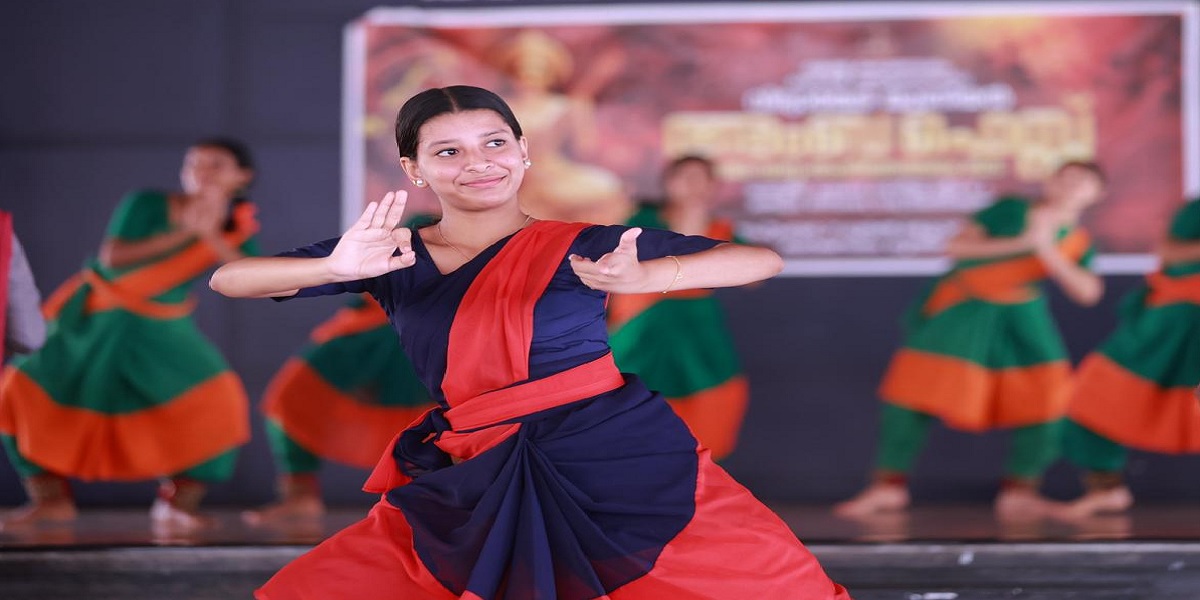
Sabri during her Kathakali practice session.
Synopsis: Her achievement stands as a testament to generations of artists who have pushed back against caste discrimination within the cultural landscape. While Kerala often prides itself on progress, deep-rooted barriers of caste, class, and identity continue to shape access and opportunity in its artistic traditions.
Can a 16-year-old girl rewrite the 125-year history of Kerala Kalamandalam? Yes.
On Vijayadashami, 2 October, Kerala witnessed a historic moment as Sabri N, a Muslim girl from Kollam and the daughter of Nizam Ammas and Aneesa, marked a powerful milestone in the world of classical arts, by performing Kathakali.
Her achievement stands as a testament to generations of artists who have pushed back against caste discrimination within the cultural landscape. While Kerala often prides itself on progress, deep-rooted barriers of caste, class, and identity continue to shape access and opportunity in its artistic traditions.
Forms like Kathakali, Bharatanatyam, Mohiniyattam, Koodiyattam, Chakyar Koothu, and Carnatic music have long been dominated by Privileged castes, even 75 years after Independence.
Discrimination remains, as seen when the Thantri of Thriprayar Sree Rama Temple refused permission for a Kathakali performance of Gurudeva Mahatmyam, a play on the life of Sree Narayana Guru, hurting the Ezhava community.
If bias can persist even in the name of the Guru, one can only imagine what it means for a Muslim girl to step into Kathakali, an art form long dominated by men and privileged castes.
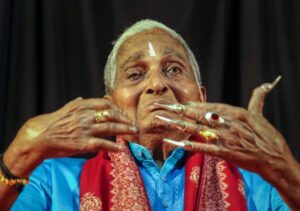
Kalamandalam Gopi
Kalamandalam Gopi, lovingly called ‘Gopi Aasan,’ retired in March 2025 after a remarkable seven-decade-long career.
Renowned for his heroic “pacha” roles, his Krishna in Kuchelavritham remains legendary. Even in retirement, he continues to inspire countless artists, including Sabri.
It was under Gopi’s guidance that Sabri joined Kerala Kalamandalam in 2023, learning her very first ‘mudras’ from the maestro himself.
Surprisingly, she made her debut in the Krishna vesham, a role Gopi himself was renowned for—creating a symbolic passing of the torch.
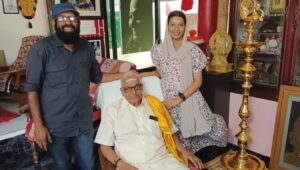
Sabri with her father at Kalamandalam Gopi’s home for blessings before debut.
Behind Sabri’s historic entry into Kathakali is Gopi’s persistent vision for inclusivity.
Until 2021, Kerala Kalamandalam admitted only boys to the eighth standard Kathakali course, primarily due to the physical practice of uzhichil (massage), considered essential for flexibility in vesham.
Questioning the gender barrier, Gopi wondered why girls, who could train in Thullal and Koodiyattam, should be excluded from Kathakali vesham, with the support of VC, T.K Narayanan and department heads Kalamandalam Sooryanarayanan and Kalamandalam Sreekumar, he helped pave the way for girls like Sabri to pursue Kathakali at the institution.
Sabri told South First, ”Gopi Aasan has always been my inspiration. As a child, I used to watch him perform, and I have always admired him. I feel lucky to have received my first Kathakali lessons from the maestro himself.”
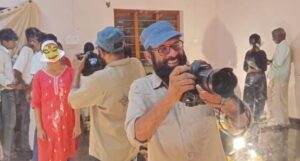
During makeup, Sabri posed for her father’s camera
According to Nizam, an environmental photographer and Sabri’s father, she began accompanying him to art performances, including Kathakali, from a very young age.
By the time she was 10, she was already assisting him in his work. Nizam, who has always been progressive and believes in separating art from religion, played a pivotal role in shaping Sabri’s journey.
He told South First, ”Even as a child, Sabri was deeply enthusiastic about both art and photography. I noticed her keen interest in Kathakali and its intricacies. When I asked if she wanted to learn it, she seemed to have been waiting for me to ask. Our community also supported the decision to enrol her in a Kathakali course.”
Hailing from Malabar, a region where traditional rituals and religious art forms like Theyyam remain prominent, Nizam emphasized, ”In Malabar, we are quite progressive. We keep religious beliefs separate from arts and culture.”
Sabri has an elder brother studying forensic science and cybersecurity, and her mother, Aneesa, has been equally supportive.
Thulasi Kumar, HOD of the Kathakali department at Kalamandalam, told South First that Sabri’s class currently has seven students—four girls, including Sabri, and three boys. He noted that while girls were previously more drawn to dance, interest in Kathakali among girls has grown significantly due to the increasing opportunities in the field.
Students can now pursue Kathakali from the 8th grade up to a PhD. Many leave after completing the 10th or 12th grade, but some dedicate their lives to the art, continuing their studies and research. After three years of training, they can make their debut (arangettam).
Sabri joined Kalamandalam in 2023, and for a 13-year-old, the early days were challenging. The institution follows a strict regimen based on punctuality and discipline, demanding a lifestyle that was unfamiliar to a young girl from a Muslim background.
”I had to wake up at 4:30 am. The sadhakam, or daily practice, usually begins between 5 and 6 am, followed by kalari, the physical training, from 9:30 a.m. Then school starts at 12:30 p.m. At first, it was hard to adapt to this new routine.” she told.
Historically, some students even began their sessions as early as 2:30 a.m. Training covers rigorous exercises under the guidance of an asan (teacher), including eye exercises (kannu sadhakam), body conditioning (mey sadhakam), and hand gestures (mudras).
During the monsoon months, students undergo intensive oil massages in the early morning to prepare their bodies for Kathakali’s demanding performances.
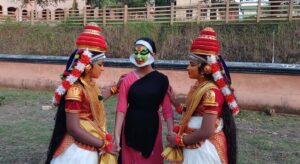
Sabri with her friends at Kalamandalam.
When asked if she feels ready to perform independently, Sabri said, ”I hope to get more stages. I am ready to perform anywhere that respects my art.”
As a teenager, she is eager to take the stage, yet she remains unaware of the prejudice some Muslim artists in Kerala have faced, such as Bharatanatyam dancer Mansiya VP who was denied performance opportunities because of her identity.
Every joy that Sabri now experiences is built on the struggles of countless artists who challenged deep-rooted barriers.
In 2022, the Koodalmanikyam Temple in Irinjalakuda, Thrissur, canceled Mansiya’s scheduled performance simply because she was Muslim and identified as an atheist. She had already faced criticism from conservative clerics for pursuing classical dance and was once denied the chance to perform at the Guruvayur Sree Krishna Temple for not being Hindu.
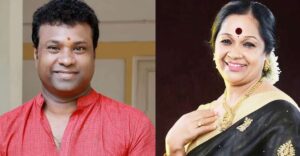
Kalamandalam Sathyabhama, RLV Ramakrishnan
In March 2024, Kalamandalam Sathyabhama, a celebrated Mohiniyattam dancer, made remarks—believed to target Mohiniyattam artist RLV Ramakrishnan, younger brother of late actor Kalabhavan Mani, that highlighted biases in the arts.
Using colourist descriptors, she suggested that only ”fair-skinned, good-looking men” could perform Mohiniyattam. Ramakrishnan courageously spoke out about the caste and colour prejudice he endured as an artist.
Even traditions in Kerala Kalamandalam have been challenged, in July 2024, the institute served non-vegetarian food to its students for the first time in 94 years, responding to student needs and the nutritional requirements of performing arts training. While it stirred debate, it was a reminder that progress often requires questioning long-standing norms.
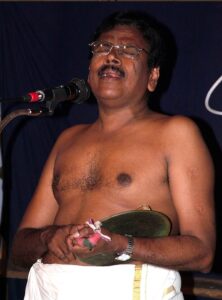
Kalamandalam Hyderalil
No story of Kerala Kalamandalam’s progress is complete without remembering late Kalamandalam Hyderali. Born into a Muslim family, he became the first non-Hindu Kathakali singer to gain recognition, though he was barred from entering temples where his songs would echo.
From access to food to the fight for dignity, these battles are slowly shaping a more inclusive art world. Girls like Sabri are now making history, stepping into spaces once deemed off-limits. Kerala’s art landscape carries a progressive promise, yet it is built on stories of struggle, courage, and relentless hope.
Sabri’s triumph is not just hers—it is the continuation of a legacy of artists who refused to be confined by the boundaries of religion, caste, or colour.
(Edited by Sumavarsha)
